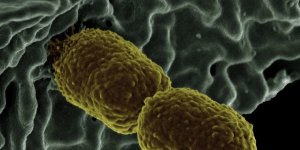| Health / Health News |
Over 100 Genetic Sites Tied to Schizophrenia
NIH | AUGUST 21, 2014
Schizophrenia is a severe and disabling brain disorder that usually strikes during young adulthood and lasts a lifetime. It affects about 1 in 100 people, causing hallucinations, delusions, and other mental problems. Because schizophrenia tends to run in families, scientists have long suspected a genetic component.

Schizophrenia. Image: NIH
Before this year, genome-wide association studies (GWAS) had identified 30 genetic regions linked to schizophrenia. But because these earlier studies tended to analyze relatively small numbers of people, each individual study was too limited to detect common genetic variations that might exert subtle effects on disease risk.
To draw on the statistical power of larger numbers, a research consortium combined data from all available schizophrenia genetic samples. They reanalyzed published results as well as all accessible raw data, both published and unpublished. In total, their analyses included nearly 37,000 people with schizophrenia and a control group of more than 113,000 people who did not have the condition—the largest GWAS to date of a psychiatric disorder.
The researchers found that 108 genetic regions had tiny variations (single-nucleotide polymorphisms, or SNPs) that were significantly associated with schizophrenia risk. Eighty-three of these regions, or loci, had not been previously reported.
Many of the identified variations converged around pathways with suspected ties to schizophrenia. One association confirmed a link to the gene that encodes a receptor for the neurotransmitter dopamine—a known target for antipsychotic medications.
Another association—one of the strongest detected—was related to immune system function. Epidemiologic evidence and earlier GWAS studies had hinted at possible immune system involvement in schizophrenia.
The researchers found overlap between the protein-related functions of some linked common variants and rare variants associated with schizophrenia in other studies. These included genes involved in learning and memory, the machinery controlling calcium ion channels, and communication between neurons via the chemical messenger glutamate.
The researchers note that the genetic loci identified by their analyses do not necessarily represent disease-causing genes. Rather, the links may indicate the presence of disease-causing variation in nearby genetic zones. Additional analyses involving even more people will help scientists further pinpoint the genes and sequences that confer risk.
YOU MAY ALSO LIKE




